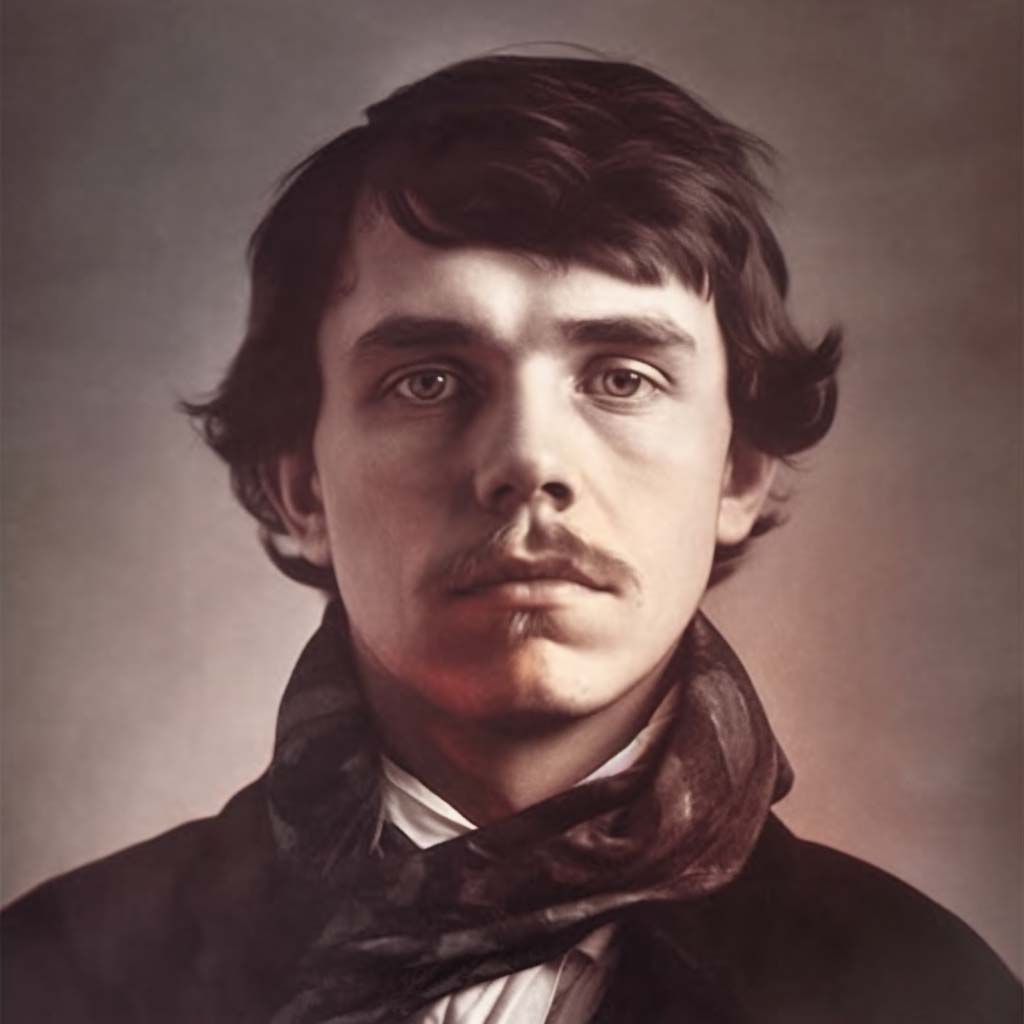
Eugène Delacroix
/1798–1863/
Eugène Delacroix, born on April 26, 1798, in Charenton-Saint-Maurice, France, is celebrated as one of the most influential figures of the Romantic movement in art. Delacroix’s early life was marked by personal tragedy and political upheaval, profoundly influencing his artistic vision. He lost his father at a young age and was subsequently raised by his mother, who nurtured his artistic talents. Delacroix entered the Lycée Louis-le-Grand, where he received a classical education that would later inform his deep appreciation for literature and history, which became prominent themes in his work.
In 1815, Delacroix enrolled in the École des Beaux-Arts in Paris, where he was mentored by the neoclassical painter Pierre-Narcisse Guérin. However, Delacroix's style soon diverged significantly from the neoclassical tradition, embracing instead the vibrant color, emotional intensity, and dramatic compositions that came to define Romanticism. His breakthrough came in 1822 with the painting "Dante and Virgil in Hell," which garnered both acclaim and controversy for its vivid depiction of human emotion and dynamic movement. Delacroix's subsequent works, such as "The Massacre at Chios" and "Liberty Leading the People," cemented his reputation as a master of capturing the tumultuous spirit of his times.
Delacroix’s influence extended beyond his lifetime, inspiring future generations of artists, including the Impressionists and Symbolists. He was not only a painter but also a prolific writer and a fervent advocate for the arts, contributing extensively to the journals of his day and maintaining detailed diaries that provided insight into his creative process and artistic philosophy. Delacroix's travels to North Africa in the 1830s had a profound impact on his work, introducing him to new subjects and a broader palette of colors and textures. He passed away on August 13, 1863, but his legacy endures, with his works continuing to be celebrated for their passion, innovation, and profound impact on the course of art history.